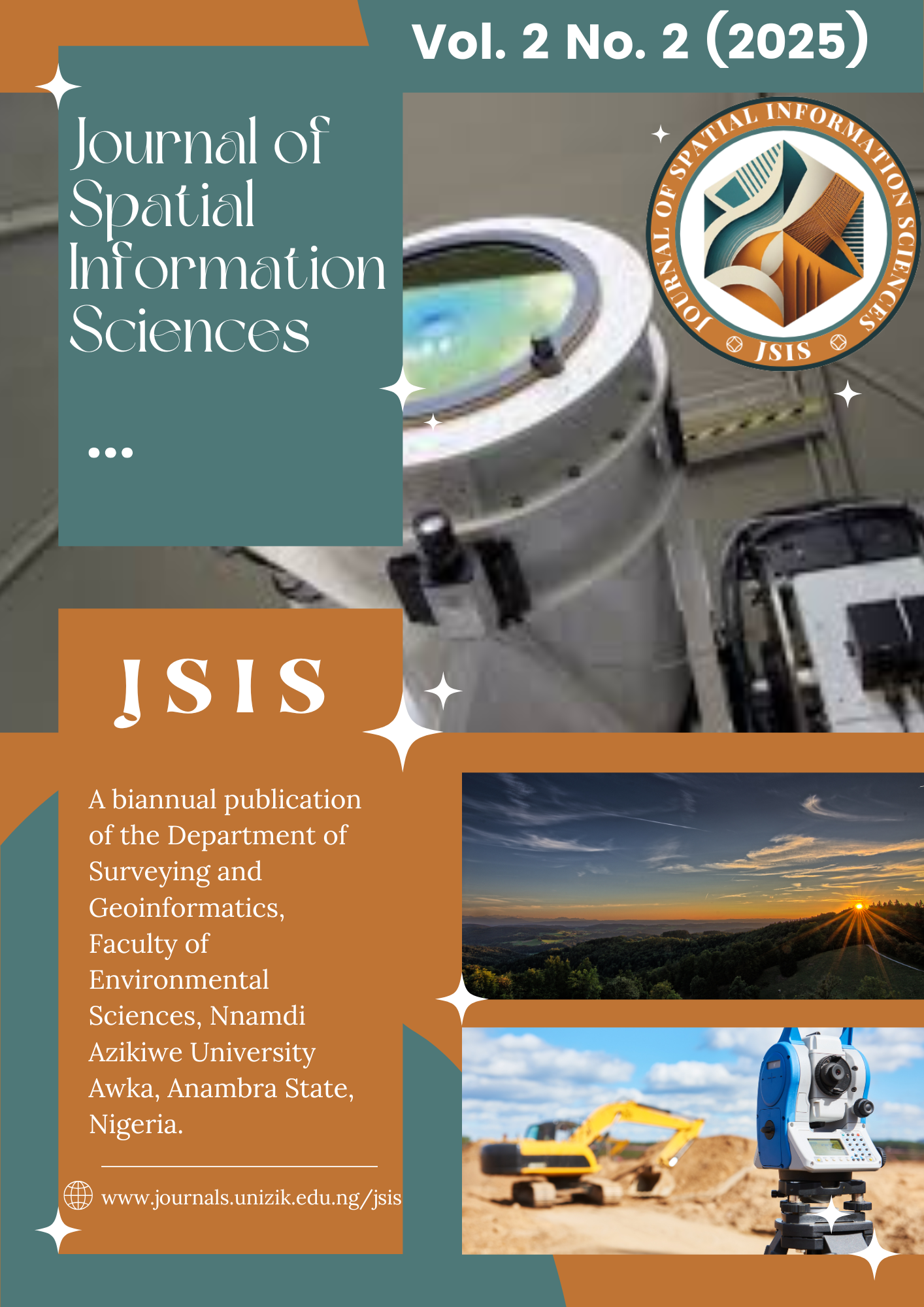Comparative Analysis and Accuracy Assessments of Terrain Heights Determination Towards Effective and Accurate Heights Measurements in Construction Works
DOI:
https://doi.org/10.5281/zenodo.15667280Keywords:
Elevations, Terrain, Levelling, Trigonometry, Tacheometry, Engineering WorksAbstract
Engineering and construction works require precise height or elevation determination, and providing such essential information is in the purview of geomatics engineers. Oftentimes, civil engineers are less concerned and mostly oblivious of the choice of method employed in the acquisition of such data but are more particular about the accuracy, time limitation and cost implication whereas, some of such engineering and construction works may require lesser accuracy. This study therefore attempts a comparative analysis and accuracy assessment of height determination by trigonometric heighting, stadia and tangential tacheometric methods relative to reference data acquired by spirit levelling operation. Thirty fixed points were selected and their elevations were determined using the afore-mentioned methods. Statistical analytical tools were employed for the comparative analytical process. The results analysis indicates that the three (3) methods –– trigonometric heighting, stadia and tangential tacheometric methods –– gave 0.077, 0.172 and 0.117 standard deviations and 0.017, 0.038, and 0.029 RMSE respectively. Thus, it can be inferred that Trigonometric heighting is more accurate relative to the other two (2) methods. However, a one-way ANOVA test shows P-value of 0.1102 as against F-Critical value of 3.1013. This reveals that there is no significant difference in the mean of the heights obtained by the three methods. Hence, the major mitigating factors which should influence the choice of any of the three (3) methods are time limitation and cost implication but not necessarily accuracy.
References
Adewale, A., Emenari, U. S., & Uwaezuoke, I. C. (2014). Comparison of Height Differences obtained from Automatic, Digital and Tilting Level Instruments. Journal of Environmental Issues and Agriculture in Developing Countries., 6(1).
Agajelu, S. I. (2018). Geodesy: The Basic Theories – Classical & Contemporary. . Enugu: El ‘Demak Publishers.
Agor, R. (2011). Surveying and Levelling (11 b.). New Delhi, India: Khanna Publishers, Darya Ganj.
Ceylan, A., Inal, C., & Sanlioglu, I. (2005). Modern Height Determination Techniques and Comparison of Accuracies . FIG Working Week 2005 and GSDI-8 themed From Pharaohs to Geoinformatics (s. 21 - 28). Cairo, Egypt.: FIG.
Ghilani, C. D., & Wolf, P. R. (2006). Adjustment Computations: Spatial Data Analysis (4 b.). New-Jersey: John Wiley & Sons Inc.
Ghilani, C. D., & Wolf, P. R. (2012). Elementary Surveying: An Introduction to Geomatics (13 b.). Boston: Prentice Hall Publishers.
Kavanagh, B. F., & Mastin, T. B. (2014). Surveying Principles and Applications (9 b.). New Jersey: Pearson Publishers.
Raufu, I. O., Tata, H., & Olaosegba, S. O. (2023). Modelling local geoid undulations using unmanned aerial vehicles (UAVS): a case study of the Federal University of Technology, Akure, Nigeria. Geodesy, Cartography and Aerial photography, 63 - 75. doi:https://doi.org/10.23939/istcgcap2023.98.063
Roy, S. K. (1999). Fundamentals of Surveying (1st b.). New Delhi, India: Prentice Hall.
Rutledge, K., McDaniel, M., & Teng, S. (2025, 03 02). Landforms. National Geographic: https://education.nationalgeographic.org/resource/landform/ adresinden alındı
Schofield, W. (2001). Engineering Surveying (5 b.). Oxford: Butterworth Heinemann Publishers.
Svabensky, O., & Weigel, J. (2004). Optimized Technology for GPS Height Determination. FIG Working Week 2004 (s. 22-27). Athens: FIG.
Thakur, P. (2023, March 15). Tacheometric Surveying – Purpose, Procedure, and Formula. . Civil Concept: https://civilconcept.com/ /tacheometric-surveying/. adresinden alındı
Uren, J., & Price, B. (2010). Surveying for Engineers (5 b.). Hampshire: Palgrave Macmillan Publishers.
Downloads
Published
Issue
Section
License
Copyright (c) 2025 J. A. Qaadri, A. O. Alagbe, S. O. Olaosegba, M. O. Okegbola, B. I. Ajisafe

This work is licensed under a Creative Commons Attribution-ShareAlike 4.0 International License.





